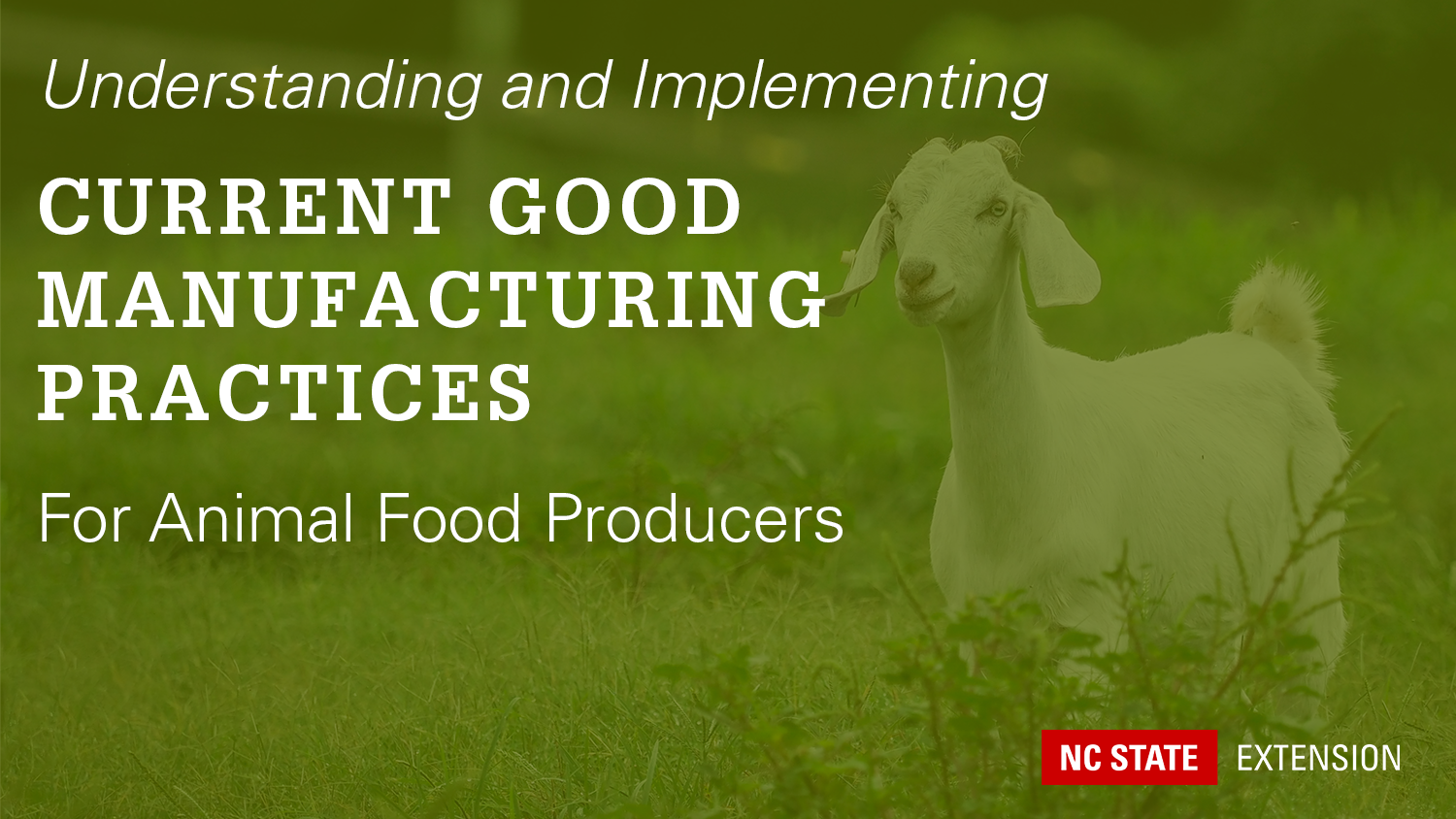Understanding and Implementing Current Good Manufacturing Practices for Animal Food Producers: New Factsheet Series
go.ncsu.edu/readext?798956
en Español / em Português
El inglés es el idioma de control de esta página. En la medida en que haya algún conflicto entre la traducción al inglés y la traducción, el inglés prevalece.
Al hacer clic en el enlace de traducción se activa un servicio de traducción gratuito para convertir la página al español. Al igual que con cualquier traducción por Internet, la conversión no es sensible al contexto y puede que no traduzca el texto en su significado original. NC State Extension no garantiza la exactitud del texto traducido. Por favor, tenga en cuenta que algunas aplicaciones y/o servicios pueden no funcionar como se espera cuando se traducen.
Português
Inglês é o idioma de controle desta página. Na medida que haja algum conflito entre o texto original em Inglês e a tradução, o Inglês prevalece.
Ao clicar no link de tradução, um serviço gratuito de tradução será ativado para converter a página para o Português. Como em qualquer tradução pela internet, a conversão não é sensivel ao contexto e pode não ocorrer a tradução para o significado orginal. O serviço de Extensão da Carolina do Norte (NC State Extension) não garante a exatidão do texto traduzido. Por favor, observe que algumas funções ou serviços podem não funcionar como esperado após a tradução.
English
English is the controlling language of this page. To the extent there is any conflict between the English text and the translation, English controls.
Clicking on the translation link activates a free translation service to convert the page to Spanish. As with any Internet translation, the conversion is not context-sensitive and may not translate the text to its original meaning. NC State Extension does not guarantee the accuracy of the translated text. Please note that some applications and/or services may not function as expected when translated.
Collapse ▲New food safety regulations, especially the Food Safety Modernization Act of 2011 (FSMA), require animal food and ingredient processing facilities to maintain their facilities according to the baseline standards outlined in the final rule for Current Good Manufacturing Practice and Hazard Analysis and Risk-Based Preventive Controls for Food for Animals.
In a new factsheet series from the NC State University Animal Food Safety program, we’ll explore:
- the different components of Current Good Manufacturing Practices (CGMP) for animal food producers, and
- how processors can comply with these standards to promote safe animal food production.
#1 in the Series: Personnel
The first factsheet in the series is all about personnel. The factsheet includes information about:
- personal cleanliness,
- washing hands,
- removing or securing objects,
- storing personal belongings, and
- other precautions.
Personnel Current Good Manufacturing Practices for Animal Food Safety
In addition to helpful information on how to comply with Personnel CGMP, there are also several NC State, FDA and other resources provided to help with compliance.
Coming Up in the Series
We’ll announce new factsheets in the series on our portal and on our Facebook and Instagram accounts. Subscribe to our updates and follow us on social media to be the first to get to our factsheets and news.
Some of the CGMP we’ll be exploring are:
- plant and grounds,
- sanitation,
- water supply and plumbing,
- equipment and utensils,
- plant operations,
- holding and distribution, and
- holding and distribution of human food by-products for use as animal food.
You can also see all of the factsheets from Feed Milling and Animal Food Safety through our NC State Extension portal.
If you have questions about animal food safety, contact Marissa Cohen.



